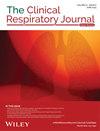The Early Effects of Esketamine on the Tumor Metastatic Microenvironment in Postoperative Lung Cancer Patients
Abstract
Background
To investigate the early effect of esketamine on the tumor metastatic microenvironment in patients with lung cancer.
Methods
Sixteen adults aged 45–80 years with the American Society of Anesthesiologists (ASA) 1 to 3 were randomly divided into the experimental group (group E) and the control group (group C). Group E received esketamine at 1 mg/kg during anesthesia induction and a continuous infusion of 0.5 mg/kg/h during the surgery. Group C was given the same amount of normal saline infusion. Patient-controlled intravenous analgesia (PCIA) in group E was administered using dexmedetomidine (0.5 mg/kg) + esketamine (50 mg) + dexamethasone (5 mg). PCIA in group C was the same dose of dexmedetomidine and dexamethasone. Data were recorded at 14 points from admission to the third day after surgery (T0–14). Parameters recorded included hemodynamics, wake time, remifentanil dosage, and so on. At T0, T10, T13, and T14, TNF-α, IL-2, IL-10, MMP-9, and VEGF-C were measured.
Results
Compared with T0, the differences of tumor necrosis factor-α (TNF-α), interleukin-2 (IL-2), matrix metallopeptidase 9 (MMP-9), and vascular endothelial growth factor-C (VEGF-C) in the two groups were statistically significant (p < 0.05). When compared to group C, VEGF-C in group E was reduced at T10 and T13 (p < 0.05). For both groups, there were intragroup differences in the changes of MMP-9 and VEGF-C levels (p < 0.05). Compared to group C, on the postoperative, group E exhibited a lower change rate of TNF-α and VEGF-C (p < 0.05).
Conclusion
Perioperative application of esketamine in patients with lung cancer provided significant sedative and analgesic effects and affected cytokines in the tumor microenvironment.


 求助内容:
求助内容: 应助结果提醒方式:
应助结果提醒方式:


